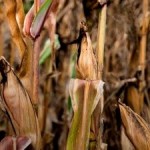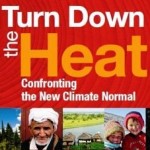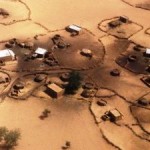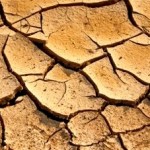
A pioneering collaboration within the international scientific community has provided comprehensive projections of climate change effects, ranging from water scarcity to risks to crop yields. This interdisciplinary effort, employing extensive model inter-comparisons, allows research gaps to be identified, whilst producing the most robust possible findings. The results provide crucial insights for decision-making regarding mitigation efforts in the face of potential impact cascades.
The analyses are to be published in a special feature of the Proceedings of the National Academy of Sciences (PNAS) that assembles the first results of the Inter-Sectoral Impact Model Intercomparison Project (ISI-MIP), which aims at bringing research on climate impacts onto a new level.
“There is an elephant in the room: current and future climate change impacts. But strangely, many people seem to be blind to it,” says Hans Joachim Schellnhuber, Director of the Potsdam Institute for Climate Impact Research (PIK) and co-author of the special feature’s introduction as well as several of its papers.
“Many decision makers prefer to turn a blind eye to global warming consequences, while many scientists tend to focus on very specific aspects of climate change. So we resemble the fabled blind men, who unknowingly touch different parts of the same elephant: grasping the animal’s trunk, one of the men is convinced he has a snake in his hand, whilst one other mistakes the tail for a rope. To recognize the animal, they must talk to each other to properly identify the individual parts and to bring them together. This is exactly what this international project does.”
More than 30 Research Teams from 12 Countries Involved
More than 30 research teams from 12 countries systematically compared state-of-the-art computer simulations of climate change impacts on a broad range of sectors. The project builds on previous inter-comparison exercises from the fields of agriculture, hydrology, and ecosystems sciences.
Results are combined to identify, for example, regional hotspots of climate change – the Amazon, the Mediterranean and East Africa – where several impact types coincide and potentially interact.
Moreover, comparing models helps to understand the differences between them. For example, projections of impacts on food prices are affected by different assumptions about the intensification of land management or changes in international trade. Elucidating the various influences of these measures could help to identify options for effective real-world policies.
“The results clearly indicate that the impacts on nature and society would increase sharply with each degree of global warming,” says Katja Frieler from the ISI MIP coordination team. The findings of the ISI-MIP are amongst the scientific publications that feed into the IPCC’s report on climate change impacts to be presented in March 2014.
Public Data Archive to Enhance the Quality of Impact Models
One of the core products of ISI-MIP is a public data archive, where the output as well as the input data from the project is available for further research and to promote maximum transparency. A specific aim is to further enhance the quality of the computer models of impacts. After the publication of its first results, the project now enters a second phase, broadening the scope of impacts considered (addressing, for example, the energy industry and global fisheries) and incorporating models that look more closely at specific regions.
“The climate change impacts picture remains far from complete, in particular with regard to socio-economic consequences,” says Pavel Kabat, Director of the International Institute for Applied Systems Analysis (IIASA), co-author of several contributions to the special feature, and co-editor.
“The human costs of climate change are often triggered by the biophysical impacts, but are not identical to the impacts themselves. For example, water shortages in some regions might contribute to human conflicts and drive large-scale migration. We already have enough certainty today about climate change impacts to recognize it is high time to act. But as scientists, we will work hard to further integrate and strengthen the existing expertise to better see the elephant in the room – and just how dangerous the mighty beast really is.”
Details of the Study:
Schellnhuber, H.J., Frieler, K., Kabat, P. (2013): The Elephant, the Blind, and the Intersectoral Intercomparison of Climate Impacts. Proceedings of the National Academy of Sciences (early online edition) [DOI:10.1073/pnas.1321791111]
URL: http://www.pnas.org/content/early/2013/12/13/1321791111
Source: PIK.














